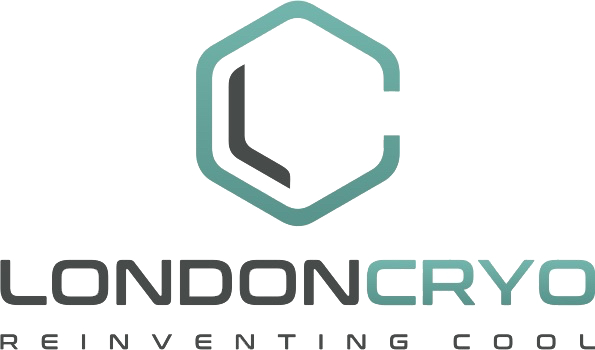Top Benefits of Fibromyalgia Cryotherapy You Should Know
Fibromyalgia is a chronic condition that affects millions of people worldwide, causing widespread pain, fatigue, sleep disturbances, and mood disorders. While traditional treatments like medications and physical therapy can help, many patients are exploring alternative therapies to find relief. One of the most promising emerging treatments is fibromyalgia cryotherapy. This innovative therapy uses extremely cold temperatures to reduce pain, inflammation, and other symptoms associated with fibromyalgia.
What is Fibromyalgia Cryotherapy?
Fibromyalgia cryotherapy is a treatment that exposes the body to very low temperatures, typically between -110°C to -140°C, for a short period of time—usually 2 to 4 minutes. This exposure triggers physiological responses in the body that can reduce inflammation, stimulate blood flow, and release endorphins, which are natural painkillers.
Unlike ice packs or localized cold therapy, whole-body cryotherapy targets multiple systems in the body at once, offering systemic benefits for fibromyalgia patients.
Top Benefits of Fibromyalgia Cryotherapy
1. Reduces Chronic Pain
One of the most significant advantages of fibromyalgia cryotherapy is its ability to reduce chronic pain. The extreme cold helps numb nerve endings temporarily, which can alleviate pain sensations. Over repeated sessions, patients often experience a decrease in overall pain levels, making everyday activities more manageable.
2. Decreases Inflammation
Inflammation plays a key role in fibromyalgia symptoms. Fibromyalgia cryotherapy works by lowering inflammation throughout the body. The cold exposure reduces the production of pro-inflammatory cytokines while increasing anti-inflammatory markers, helping to calm the body’s overactive immune response.
3. Improves Sleep Quality
Many people with fibromyalgia struggle with sleep disturbances due to pain and discomfort. Regular sessions of fibromyalgia cryotherapy can improve sleep quality by reducing nighttime pain and promoting relaxation. Better sleep also supports the body’s natural healing processes.
4. Boosts Energy Levels
Fatigue is a common symptom of fibromyalgia. Fibromyalgia cryotherapy stimulates the release of endorphins and adrenaline, which can boost energy levels and enhance mental clarity. Patients often report feeling more alert and less fatigued after a cryotherapy session.
5. Enhances Mood and Mental Health
Living with chronic pain can affect mental health, leading to anxiety and depression. Cryotherapy has been shown to improve mood by triggering the release of endorphins and serotonin. Fibromyalgia cryotherapy can help patients feel more positive, reducing the emotional burden of the condition.
6. Supports Muscle Recovery
Fibromyalgia often causes muscle stiffness and soreness. Fibromyalgia cryotherapy promotes faster muscle recovery by reducing inflammation and improving blood circulation. This can help patients regain mobility and participate in light exercise routines, which are essential for overall health.
7. Improves Circulation
Cold exposure in fibromyalgia cryotherapy stimulates blood circulation. Improved circulation delivers more oxygen and nutrients to tissues while removing waste products efficiently. This process can help reduce pain, swelling, and fatigue commonly associated with fibromyalgia.
8. Enhances Immune Function
Regular cryotherapy sessions may strengthen the immune system. The cold stimulates the production of white blood cells and other immune factors. For fibromyalgia patients, fibromyalgia cryotherapy can offer added protection against infections while supporting overall health.
9. Non-Invasive and Drug-Free
One of the key benefits of fibromyalgia cryotherapy is that it is non-invasive and drug-free. Many fibromyalgia treatments involve medications that can have side effects. Cryotherapy offers a natural alternative that targets multiple symptoms without the risks associated with long-term medication use.
10. Complements Other Treatments
Fibromyalgia cryotherapy is not a replacement for standard treatments but works well in combination with other therapies like physical therapy, massage, and lifestyle changes. Integrating cryotherapy into a comprehensive care plan can provide more significant symptom relief for fibromyalgia patients.
How to Prepare for Fibromyalgia Cryotherapy
Before trying fibromyalgia cryotherapy, it’s essential to follow some preparation guidelines:
Consult Your Doctor: Discuss your condition and medical history to ensure cryotherapy is safe for you.
Dress Appropriately: Most cryotherapy centers provide minimal clothing (usually shorts and a tank top) and protective gear for extremities.
Limit Pre-Treatment Activity: Avoid heavy exercise immediately before a session to prevent overexertion.
Stay Hydrated: Drink plenty of water before and after treatment to support circulation.
Safety Considerations
While fibromyalgia cryotherapy is generally safe, some precautions are necessary:
Avoid if you have uncontrolled high blood pressure, heart conditions, or respiratory problems.
Limit sessions to the recommended duration (2–4 minutes) to prevent frostbite or cold-related injuries.
Monitor your body’s response and stop immediately if you feel discomfort or numbness.
Frequently Asked Questions (FAQ)
1. How often should I do fibromyalgia cryotherapy?
Most patients start with 2–3 sessions per week. Over time, sessions can be adjusted based on symptom improvement and tolerance.
2. Does fibromyalgia cryotherapy hurt?
No, the process is generally painless. You may feel intense cold and tingling during the session, but it is brief and tolerable.
3. How soon will I see results?
Some patients notice immediate pain relief after a session, while others may require several weeks of regular treatments to experience significant benefits.
4. Can fibromyalgia cryotherapy replace medication?
Cryotherapy can reduce symptoms and complement other treatments but should not replace medications without consulting a healthcare provider.
5. Are there side effects?
Mild side effects like temporary redness, tingling, or skin sensitivity may occur. Serious side effects are rare when conducted under professional supervision.
Conclusion
Fibromyalgia cryotherapy is an innovative and promising therapy for managing the complex symptoms of fibromyalgia. From pain reduction and inflammation control to improved sleep and mood, its benefits make it an attractive option for patients seeking non-invasive, drug-free alternatives. By integrating fibromyalgia cryotherapy into a comprehensive treatment plan, individuals can take proactive steps toward better symptom management and enhanced quality of life.

